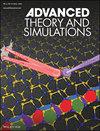下一代太阳能电池的超薄2D/2D材料异质结
IF 2.9
4区 工程技术
Q1 MULTIDISCIPLINARY SCIENCES
引用次数: 0
摘要
异质结太阳能电池是太阳能电池技术的一个显著改进,其特点是由两种不同的半导体材料创建的界面。然而,高制造成本和生产过程的复杂性限制了传统HJTs的使用。鉴于目前太阳能电池的趋势是使用更薄的吸收层,很明显,具有原子薄结构和高灵活性的二维材料是与下一代太阳能电池技术集成的最合适的选择。磷烯是一种新出现的二维材料,具有优异的载流子迁移率(≈4000 cm2 V−1 s−1),可调的带隙(≈0.3至2 eV)和更好的机械柔韧性,在各个领域受到了极大的关注。另一方面,作为过渡金属二硫族化合物的MoS2具有可调的带隙(≈1.2-2 eV),高载流子迁移率(≈200 cm2 V−1 s−1)和巨大的表面积,使其非常适合于各种各样的应用。在这项工作中,使用2D/2D材料异质结太阳能电池对ITO/磷二烯/MoS2/Al器件进行了SCAPS‐1D模拟。模拟的重点是改变二维半导体的带隙和缺陷密度。此外,研究了输入光强对器件性能的影响。本文章由计算机程序翻译,如有差异,请以英文原文为准。
Ultra‐Thin 2D/2D Material Heterojunction for Next‐Generation Solar Cells
Heterojunction solar cells are a notable improvement in solar cell technology, distinguished by the interface created by two distinct semiconductor materials. However, high manufacturing costs and complexity in the production process have limited the use of traditional HJTs. Given the current trend in solar cells toward using thinner absorber layers, it is evident that 2D materials with atomically thin structures and high flexibility are the most suitable options for integrating with next‐gen solar cell technology. Phosphorene, a recently emerged 2D material that has exceptional carrier mobility (≈4000 cm2 V−1 s−1 ), tunable bandgap (≈0.3 to 2 eV) and better mechanical flexibility has gained immense attention in various fields. On the other hand, MoS2 a member of transition metal dichalcogenides possess tunable bandgap (≈1.2–2 eV), high carrier mobility (≈200 cm2 V−1 s−1 ) and huge surface area making them highly suitable for a wide variety of applications. In this work, SCAPS‐1D simulation using 2D/2D material heterojunction solar cell is carried out for ITO/phosphorene/MoS2 /Al device. The simulation focused on modifying bandgap and defect density (Nt ) of 2D semiconductors. Furthermore, impact of input light intensity on device performance are studied.
求助全文
通过发布文献求助,成功后即可免费获取论文全文。
去求助
来源期刊

Advanced Theory and Simulations
Multidisciplinary-Multidisciplinary
CiteScore
5.50
自引率
3.00%
发文量
221
期刊介绍:
Advanced Theory and Simulations is an interdisciplinary, international, English-language journal that publishes high-quality scientific results focusing on the development and application of theoretical methods, modeling and simulation approaches in all natural science and medicine areas, including:
materials, chemistry, condensed matter physics
engineering, energy
life science, biology, medicine
atmospheric/environmental science, climate science
planetary science, astronomy, cosmology
method development, numerical methods, statistics
 求助内容:
求助内容: 应助结果提醒方式:
应助结果提醒方式:


